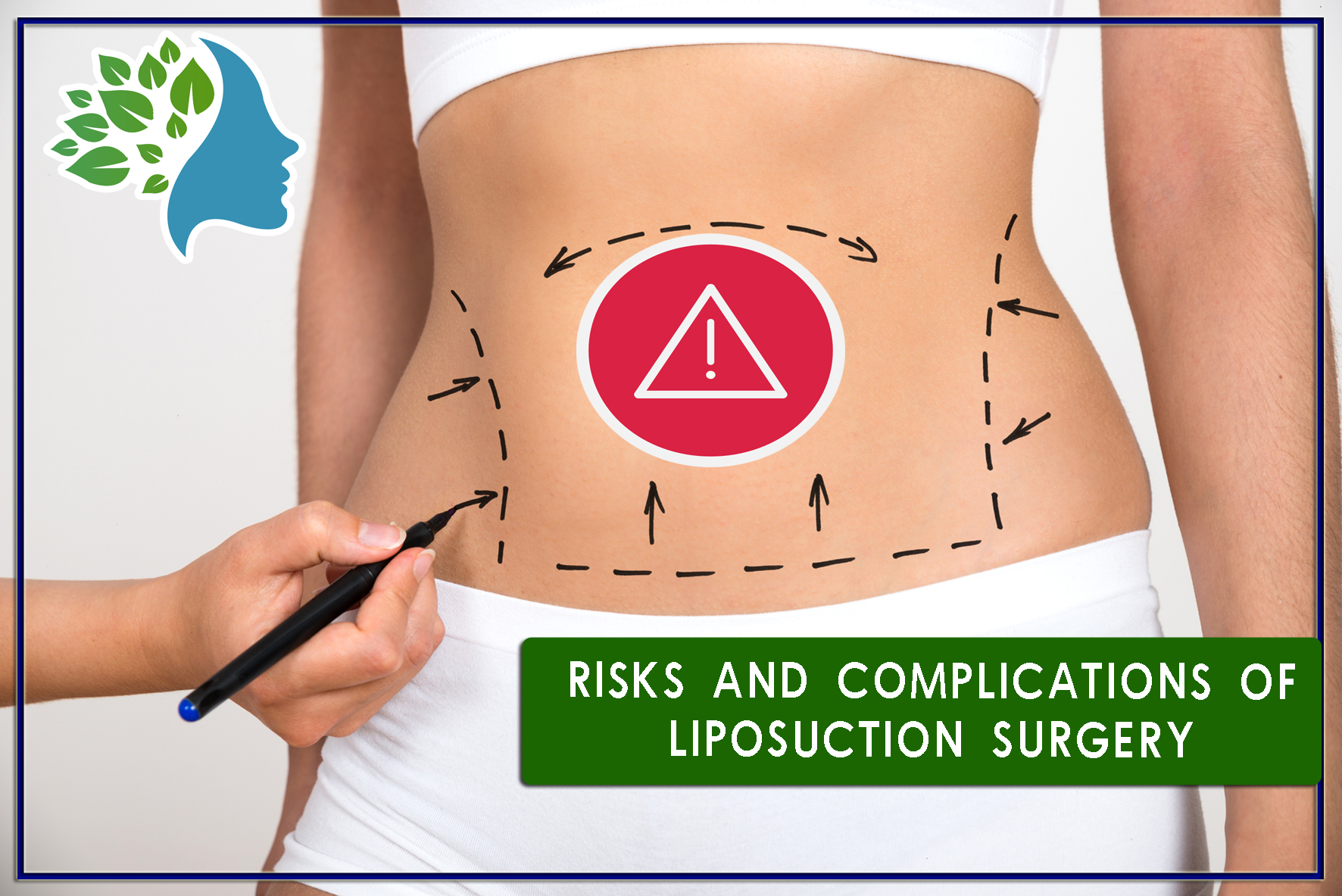Risks and complications of liposuction surgery - what to do
Liposuction is basically a type of surgery in which a hollow metal tube made of stainless steel (called a cannula) enters the tissue of the desired area through an incision made on the skin, and the fat in that area is removed by suction. Although today, liposuction is considered a common and safe way to get rid of accumulated fat in different areas of the body, we should not ignore the fact that liposuction is still a surgical procedure and can have its own risks and side effects.
Among the risks and possible side effects of liposuction , we can mention infection, embolism, inflammation, damage to organs and nerves, death of skin tissue, burns, excessive bruising, poisoning caused by anesthetic drugs and leading to death in rare cases. . Fatalities from liposuction have been reported at the lowest level, between 3 cases per 100,000 cases to more than 20 to 100 cases per 100,000 surgeries performed. This statistic is similar to the probability of death in traffic accidents, which results in 16 deaths per 100,000 accidents.
Be sure to inform your surgeon fully about your condition before the operation.
Considering the risks of this treatment method, be sure to research this method well in advance and be sure to consult with an experienced plastic surgeon so that you can make an informed decision about taking this surgery by considering the benefits and risks of this method. Remember that liposuction is a cosmetic procedure that is not medically necessary at all, so take your time and gather the right information so that you can make the most reasonable decision. Also, be sure to inform your surgeon of your medical history and whether you are taking certain medications before the operation.
The most common side effects of liposuction
Bruising, swelling and numbness
The most common unpleasant side effects of liposuction are severe bruising, swelling and numbness of the treated area. Most of these side effects will be resolved after 6 months, but if the numbness of the treated area continues, then this side effect indicates nerve damage and may be permanent. Most patients will have severe bruising for the first 7 to 10 days after surgery, although bruising may be more severe and take longer to heal in patients who bleed profusely (those with hemophilia) and those with a history of anti-inflammatory medications. to be Also, after the operation, fluids may also be secreted from the swollen surgical incisions.
skin damage
Another common side effect of liposuction is tissue death or skin necrosis (death of a collection of skin cells and tissues in the treated area), although this complication does not cause death. In this case, the dead skin first changes color and then the infection caused by the bacteria is transferred to wider areas of the skin. Another potential risk and side effect of ultrasound liposuction or laser liposuction (also known as SmartLipo) is burns. In this liposuction method, the cannula may become very hot due to the high energy level of the ultrasound and laser and burn the surrounding tissue. Such an event can cause permanent scarring, skin discoloration, and even nerve damage.
In addition to creating permanent scars and changing the color of the skin, another damage that liposuction can do to the beauty of the skin is creating irregularity and unevenness in skin contouring. This complication usually occurs in face and neck liposuction where, due to the poor elasticity of the skin (especially in older patients) and the uneven removal of fat tissue, liposuction can make the skin of the treated area look wrinkled, wavy and faded.
Risks and rare side effects of liposuction
Dangers of anesthesia
Anesthesia for liposuction can cause more serious complications during or after the procedure. Thomson liposuction is one of the most common liposuction procedures in which high doses of lidocaine are used for local anesthesia. Over-injection of lidocaine can lead to poisoning of the patient, after which side effects such as numbness, drowsiness, ringing in the ears, slurred speech, convulsions, anesthesia, and possibly respiratory and cardiac arrest may occur. Respiratory and cardiac arrest can be fatal. Remember to undergo a physical examination before liposuction to determine if this procedure is right for you. Note that visiting a reputable and experienced surgeon can minimize the possibility of such complications. Be sure to be honest when presenting your medical history to the doctor and inform him of all the cases.
infection
Besides the risks of anesthesia, another inherent risk of all surgeries is infection. Although smaller incisions are made in liposuction, there is still a possibility of infection of these wounds and it should be considered as a possible risk. Necrotizing fasciitis (flesh-eating bacteria) and toxic shock syndrome are two types of acute surgical infections that can lead to patient death. If such cases occur, surgery may be needed to treat the infected tissue, and these multiple surgeries increase the possibility of permanent scars and scars. In most cases, the doctor prescribes antibiotics to the patient before liposuction to prevent such cases. To minimize the risk of infection, you should disinfect and clean your wounds regularly after surgery, and you should see your doctor or surgeon immediately if you develop any signs of infection.
Fat embolism
Another fatal side effect of liposuction is fat embolism. Fat embolism occurs when, due to the shock and vibration caused by the movement of the cannula, some of the vessels around the area are damaged and the fat enters the vessel. In this case, this fat can accumulate in the lungs or go to the brain. Both of these conditions are very dangerous and deadly, because the fat trapped in the lungs can cause shortness of breath, difficulty breathing, and respiratory arrest, and even worse, when this fat reaches the brain, it can lead to permanent paralysis and death. .
Such cases should also be considered as possible risks of liposuction so that if there are signs of internal damage, it can be controlled with immediate medical and surgical measures.
 free consultation
free consultation










